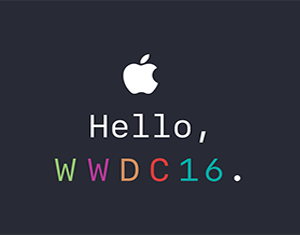Article by Domain Support and Lindsay Campos
In Apple’s most recent keynote, everyone in the audience and watching at home was excited to hear about the new Macbook Pro with TouchBar. Typical of Apple, the new notebook lineup is thinner, lighter, faster, more intuitive, and so on. There was something else that came before this hardware announcement that has also been so quintessentially Apple: a dedication to accessibility.
Apple has been committed to making its hardware and software accessible to everyone for a long time. Every release of Mac OS X has included text-to-speech, Voiceover has been a part of the operating system since Mac OS X Tiger, which was released in April of 2005, and many of the vision-based universal access preferences have been in Mac OS X since 2002. Since then, Apple has expanded accessibility preferences to include Switch Control for individuals with motor function disabilities, bluetooth connectivity to braille-based keyboards for iPads and iPhones, and audio descriptions for video files for the visually impaired. Apple continues to create more preferences with accessibility in mind, and has even made a website just for Apple accessibility.
Visual
Back in June, Apple announced an exciting new feature at their Worldwide Developers Conference called “Magnify,” where users would be able to use the camera in their iPhone to quickly turn the device into a magnifying glass. Since Apple continually wants to make new improvements to the Visual portion of their accessibility preferences, their latest keynote featured an expansion to Voiceover. Now, Voiceover works in the camera application of the iPhone, letting you know if there is a person or people in the photo, how many people are in frame, and if they are smiling. This is a pretty amazing expansion for the visually impaired, and shows that Apple is not done innovating accessibility in their apps.
Hearing
The iPhone can connect to a few dozen models of hearing aids, as featured in a video at the beginning of Apple’s latest keynote. The video features Win Whittaker, an outdoor climbing guide, using his ReSound hearing aid paired with his iPhone so that he can switch his hearing aid into “outdoor” mode to reduce ambient wind noise and lock into voices. A video on Apple’s new accessibility website shows Win using the “Live Listen” feature, which turns the iPhone into a live, real-time wireless microphone for the hearing aid. This is excellent for anyone who has ever used their hearing aid in a crowded place with lots of ambient noise and has had trouble hearing a person close to them.
Learning
Apple has updated a couple of features for kids and adults with learning disabilities or just different learning styles and needs. A big update comes in the form of “Reading Support,” featured on Apple’s new accessibility website. A menu for Apple’s “Speak Screen” function allows a reader to follow along with the text as it is read aloud, as well as pause, rewind, fast forward, slow down, or speed up the reading as needed. A reader can even highlight a particular word, sentence or passage in order to review material, or just for help pronouncing a word. There’s also “Typing Feedback,” which allows for letter to be called out audibly as you type them, a great advantage for a dyslexic typist.
Physical/Motor Skills
Switch Control is a feature built into Mac OS and iOS that allows a user to interact with the computer with a single button. This is a pretty cool idea in theory, until you see it in action. At that point, it becomes mind-blowing. Apple’s latest keynote featured a video presentation that included Sady Paulson, a certified Final Cut Pro editor. She is confined to an electric wheel chair and is non-verbal. She is featured in this video I keep talking about, but she has a much larger role in this video: she is the editor and narrator. Sady uses two buttons built into the headrest of her electric wheelchair to control a myriad of options on her iMac, and edits the video as you watch it. Her narration comes through in the form of a text to speech application takes her type written document and reads it aloud for everyone to hear. I recommend giving this video a look, and I’ve included the link below.


